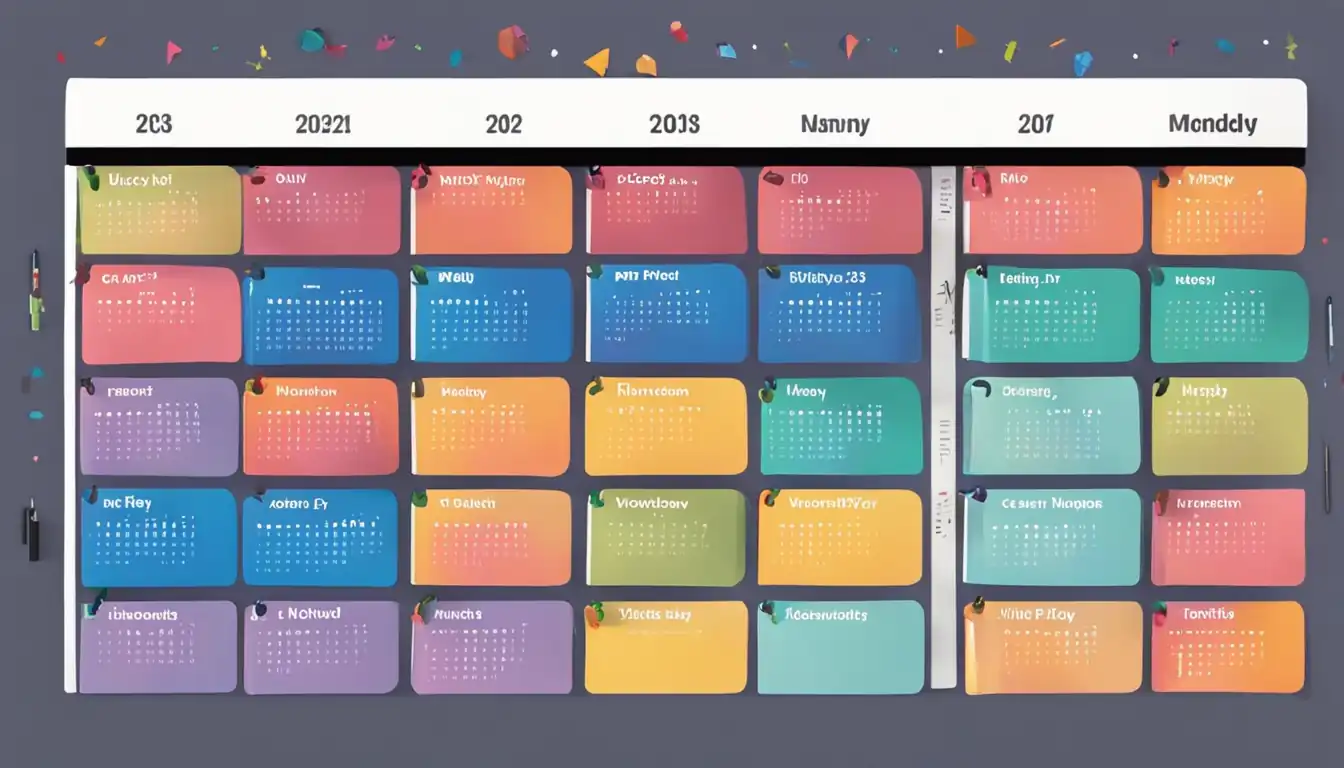Mastering Content Calendar Planning for Effective Content Strategy

Content calendar planning is a crucial aspect of any successful content strategy. By organizing and scheduling your content in advance, you can ensure that your messaging is consistent, timely, and engaging. In this post, we will delve into the art of mastering content calendar planning to help you take your content strategy to the next level.
Understanding the Basics of Content Calendar Planning

What is a Content Calendar
A content calendar is a strategic tool used by marketers to plan and organize their content creation and publishing schedule. It typically includes details such as topic ideas, publication dates, target keywords, and distribution channels.
Why You Need a Content Calendar in Your Marketing Arsenal
- Organization: A content calendar helps you stay organized by providing a clear overview of your content strategy and schedule.
- Consistency: By planning ahead with a content calendar, you can ensure a consistent flow of content for your audience.
- Efficiency: Having a structured plan in place can save time and resources by streamlining the content creation process.
- Alignment: A content calendar allows you to align your content with key marketing initiatives and business goals.
- Flexibility: While providing structure, a content calendar also allows for flexibility to make adjustments as needed based on performance data or market trends.
Key Elements of an Effective Content Calendar
A well-structured content calendar is essential for a successful content strategy. Here are the key elements that every effective content calendar should have:
Core Components Every Content Calendar Should Have
Content Goals and Objectives: Clearly define the purpose of your content and what you aim to achieve with it. This will guide your content creation process.
Content Themes and Topics: Plan out the themes and topics you want to cover in your content calendar to ensure a cohesive and strategic approach.
Publishing Schedule: Establish a consistent publishing schedule to keep your audience engaged and build trust with them.
Content Formats: Include a variety of content formats such as blog posts, videos, infographics, etc., to cater to different audience preferences.
Target Audience Persona: Understand your target audience's needs, preferences, and pain points to create relevant and valuable content for them.
Keyword Research: Conduct keyword research to optimize your content for search engines and improve its visibility online.
Promotion Strategy: Plan how you will promote your content across different channels like social media, email newsletters, etc., to reach a wider audience.
Integrating Various Types of Content
When planning your content calendar, it's important to include various types of content to keep your audience engaged and interested. Here are some types of content you can integrate into your calendar:
- Blog Posts
- Videos
- Infographics
- Case Studies
- Whitepapers
- Webinars
- Podcasts
By incorporating a mix of these content types in your calendar, you can cater to different learning styles and preferences within your target audience. This variety will also help you maintain interest and engagement over time.
Step-by-Step Guide to Creating Your Content Calendar
Setting Up Your Framework
To start mastering content calendar planning, the first step is to set up a solid framework for your calendar. This includes determining the frequency of your content publication, identifying key themes or topics to focus on, and establishing clear goals for your content strategy.
Key points to consider when setting up your framework:
- Determine how often you will publish new content (daily, weekly, monthly).
- Identify key themes or topics that align with your brand and target audience.
- Set specific goals for your content strategy (increase website traffic, generate leads, etc.).
- Choose a format for your calendar (spreadsheet, online tool, project management software).
Populating Your Calendar with Strategic Content Ideas
Once you have established the framework for your content calendar, the next step is to populate it with strategic content ideas. This involves brainstorming topics that align with your key themes and goals, conducting keyword research to optimize for SEO, and scheduling content based on seasonality or upcoming events.
Tips for populating your calendar with strategic content ideas:
- Brainstorm a list of potential topics that resonate with your target audience.
- Conduct keyword research to identify relevant keywords and phrases to incorporate into your content.
- Consider seasonality and upcoming events when planning out your content schedule.
- Create a mix of different types of content (blog posts, videos, infographics) to keep your audience engaged.
By following these steps and consistently updating and refining your content calendar, you can effectively plan and execute a successful content strategy that drives results for your business.
Tools and Resources to Streamline Your Content Calendar Planning

In today's fast-paced digital world, having the right tools and resources at your disposal can make all the difference when it comes to mastering content calendar planning for an effective content strategy. Here are some key tools and resources that can streamline your content calendar planning process:
Software Solutions That Can Help
Investing in the right software solutions can greatly enhance your content calendar planning efforts. Here are some popular software options that can help you stay organized and efficient:
ContentCal: This platform offers a user-friendly interface for creating and managing content calendars. It allows you to schedule posts, collaborate with team members, and analyze performance metrics.
CoSchedule: CoSchedule is another popular choice for content calendar planning. It offers features such as drag-and-drop functionality, social media integration, and customizable templates.
Trello: Trello is a versatile project management tool that can be used for content calendar planning. Its visual boards and cards make it easy to organize tasks and deadlines.
Utilizing Templates and Examples
Using templates and examples can save you time and provide structure to your content calendar planning process. Here are some ways you can leverage templates and examples:
"Templates provide a framework for organizing your content ideas and scheduling them effectively."
Content Calendar Templates: Many online resources offer free or paid content calendar templates that you can customize to suit your needs. These templates typically include sections for content types, publishing dates, keywords, and more.
Industry Examples: Studying successful content calendars from within your industry can provide valuable insights into what works well. Look for case studies or examples of brands that have effectively planned their content calendars.
By utilizing these tools and resources, you can streamline your content calendar planning process and set yourself up for success in implementing an effective content strategy.
Best Practices for Maintaining and Updating Your Content Calendar
Regular Review and Adaptation Processes
Maintaining a content calendar is not a one-time task; it requires regular review and adaptation to ensure its effectiveness. Here are some best practices to consider:
Monthly Audits: Conduct monthly audits of your content calendar to assess what worked well and what needs improvement. This will help you identify trends and make necessary adjustments.
Quarterly Planning Sessions: Schedule quarterly planning sessions to review your content strategy, set new goals, and align your upcoming content with your overall business objectives.
Flexibility: Be flexible with your content calendar to accommodate any unexpected changes or opportunities that may arise. Leave room for last-minute additions or adjustments.
Feedback Loop: Establish a feedback loop with your team members to gather insights on the performance of the content published according to the calendar. Use this feedback to refine your strategy moving forward.
Tips for Keeping Your Team on Track with the Calendar
To ensure that your team stays on track with the content calendar, consider implementing the following tips:
Clear Communication: Clearly communicate deadlines, responsibilities, and expectations to all team members involved in creating and publishing content.
Collaborative Tools: Utilize project management tools or software that allow for easy collaboration, task assignment, and tracking progress towards content deadlines.
Regular Check-ins: Schedule regular check-in meetings or calls with team members to discuss progress, address any challenges, and ensure alignment with the content calendar.
Training and Support: Provide training and support for team members who may need assistance in understanding how to use the content calendar effectively.
Recognition and Rewards: Recognize and reward team members who consistently meet deadlines, produce high-quality content, or contribute innovative ideas to the content strategy.
By following these best practices and tips, you can master content calendar planning for an effective content strategy that drives results for your business.
Conclusion
In conclusion, mastering content calendar planning is essential for creating an effective content strategy. By understanding the basics, incorporating key elements, following a step-by-step guide, utilizing tools and resources, and implementing best practices for maintenance, you can streamline your content creation process and keep your team on track. So start planning your content calendar today and watch your content strategy soar to new heights!